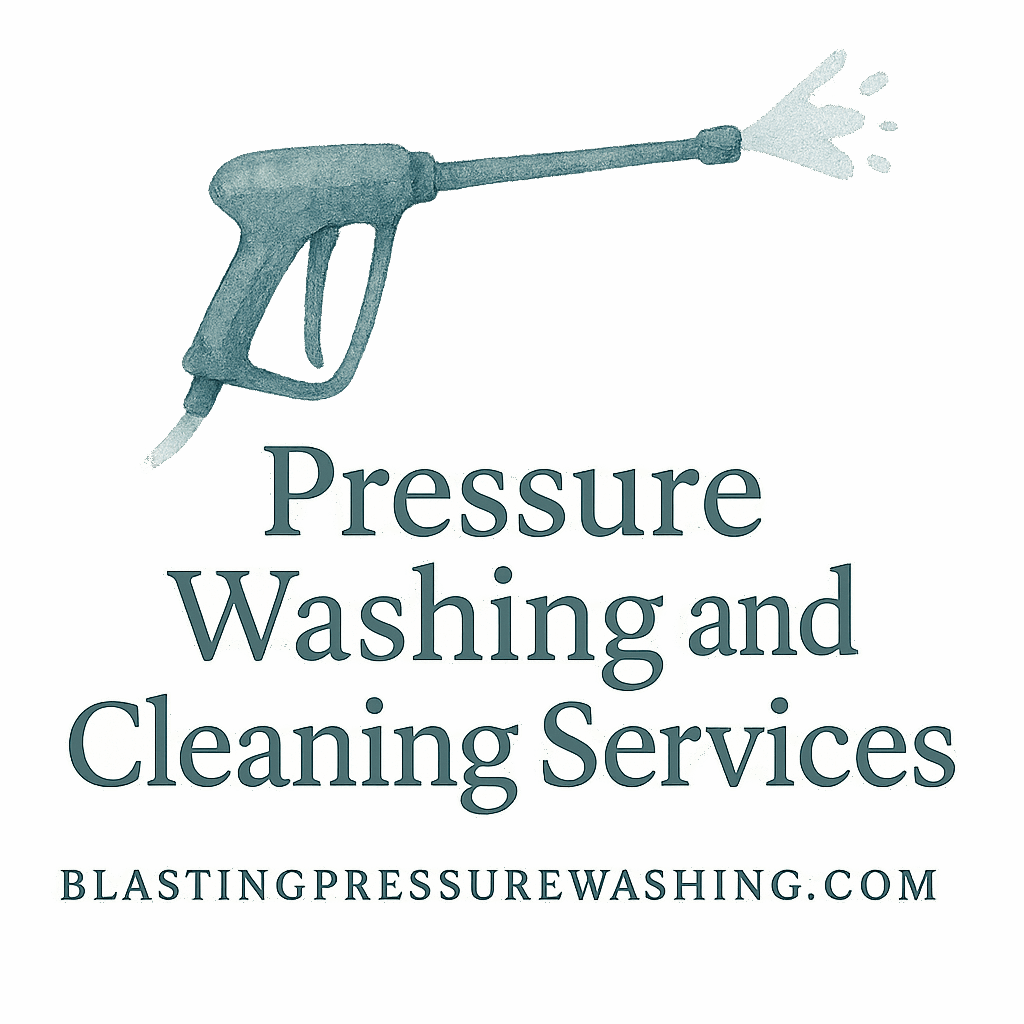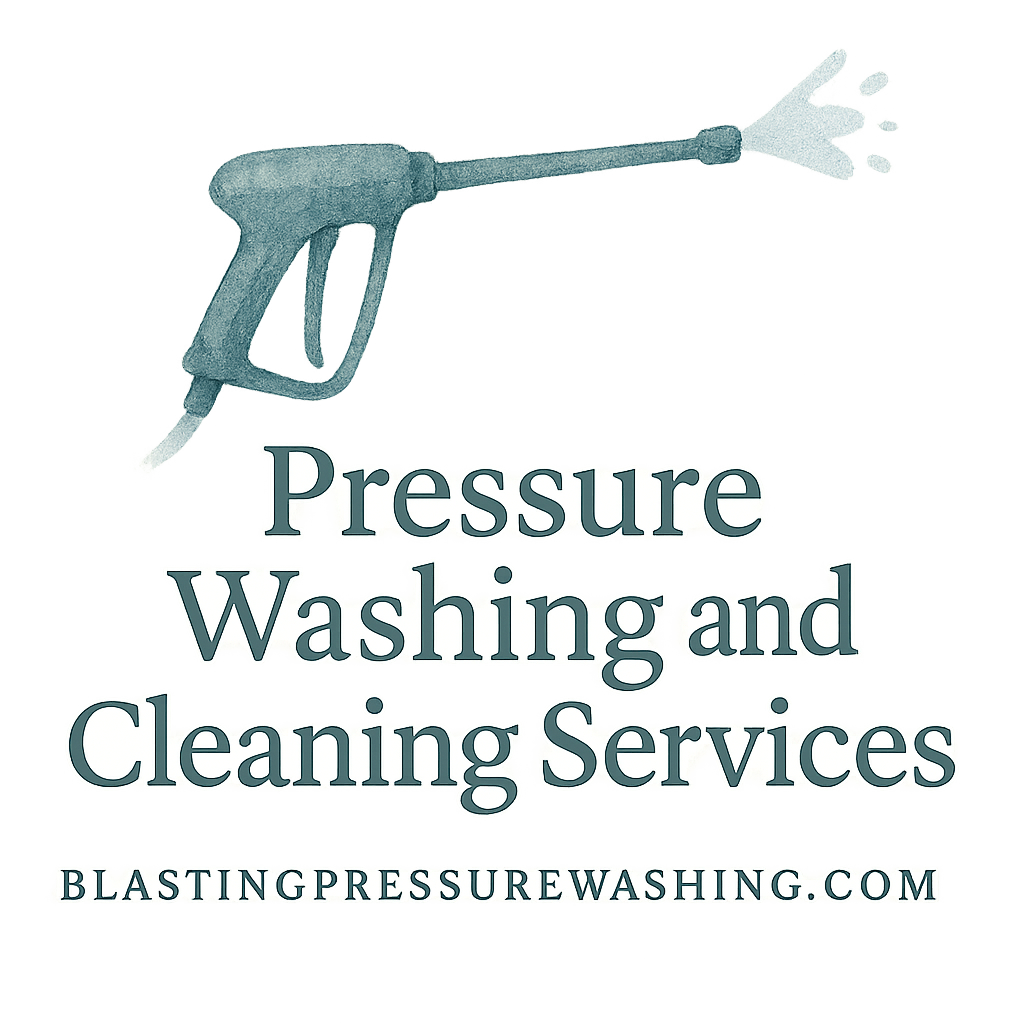Introduction
Ever wondered why one commercial pressure washing quote is wildly different from another? You’re not alone. Business owners often ask, “Why is it so expensive to wash a parking lot?” or “How come the building next door paid less?” The truth is, commercial pressure washing costs aren’t one-size-fits-all. In fact, multiple variables come into play.
In this guide, we’ll dive into 6 major factors that affect commercial pressure washing costs, so you’ll know exactly what you’re paying for — and maybe even how to save a few bucks.
Want to get ahead? Learn more about commercial pressure washing and how to get the best bang for your buck.
1. Size of the Area Being Cleaned
How Square Footage Impacts Cost
Let’s start with the obvious: size matters. The larger the area, the more time, water, labor, and equipment are required.
- A 2,000 sq. ft. retail space costs far less to clean than a 15,000 sq. ft. warehouse.
- Most companies charge per square foot, and this rate decreases slightly as size increases due to volume discounts.
Think of it like buying in bulk—you might pay $0.20/sq. ft. for a small job, but only $0.10/sq. ft. for a much larger job.
Case Examples: Small vs. Large Properties
- Small café patio (500 sq. ft.): Minimal grime, costs about $100–$150.
- Large industrial site (20,000 sq. ft.): Heavy equipment needed, estimate around $2,000–$3,000+.
Check out more on this at our guide to residential and commercial pressure washing differences.
2. Type of Surface Material
Concrete vs. Brick vs. Metal
Different surfaces require different treatment:
- Concrete: Durable and fairly simple to clean.
- Brick: More fragile—needs gentler pressure and often specialty nozzles.
- Metal siding: Can reflect heat, affecting how chemicals react.
This affects the time and tools needed, which impacts pricing. For example, delicate surfaces increase labor costs due to slower washing speeds and more precision work.
Special Surface Considerations
Some surfaces may require pre-treatment or post-treatment, like sealing or eco-safe rinses. These extras raise the cost.
Learn more about surface-specific pressure washing techniques and tools.
3. Level of Dirt and Staining
Light Cleaning vs. Heavy-Duty Grime
Not all dirt is created equal. Some areas may just have a thin layer of dust, while others have years of built-up oil, graffiti, or chewing gum.
- Light soil: Quicker to remove, cheaper overall.
- Heavy grime: Needs pre-soaking, stronger detergent, and repeat passes.
The Role of Cleaning Agents
Using the right cleaning agents can make a huge difference. Specialized chemicals for oil, grease, mold, or rust removal will add to your final bill.
Looking for safer alternatives? Read up on our eco-friendly pressure washing tips and why they matter for your commercial space.

4. Accessibility and Location
Hard-to-Reach Areas
If the cleaning crew needs ladders, scaffolding, or specialized lifts to access signage, multi-story buildings, or tight alleyways, the job just got more expensive.
The more complex the job, the more prep and gear required. Think about cleaning the back of a sign 30 feet in the air versus a flat sidewalk.
Urban vs. Rural Jobs
- Urban areas: Often mean tight spaces and parking limitations, which raise labor time.
- Rural properties: Could be harder to reach, requiring travel fees or fuel surcharges.
For pressure washing that fits your environment, visit our seasonal and location-based tips.
5. Frequency and Scheduling of Service
One-Time vs. Recurring Cleanings
Need a one-time cleanup before a big event? Or do you prefer a regular monthly cleaning to maintain appearances?
- Recurring cleanings often come at a discount.
- One-time deep cleans are pricier due to the intensity and setup involved.
Seasonal Demands and Their Costs
Spring and summer are peak seasons for pressure washing—everyone wants their storefronts looking clean and vibrant. Prices often rise with demand.
Tip: Lock in off-season rates for the best value. Explore our seasonal cleaning advice to time your wash perfectly.
6. Required Equipment and Labor
Standard Tools vs. Specialized Equipment
Some jobs can be done with a basic pressure washer and a water source. Others need hot water machines, industrial sprayers, or even soft-washing rigs.
More equipment means:
- Higher rental or maintenance costs
- Skilled labor to operate it
- More safety precautions
Labor Time and Team Size
A 2-person team may need two days to clean your office exterior, but a 4-person crew can do it in one. Labor costs are often the biggest part of the invoice.
Get the right team for your job through experts in commercial pressure washing.
Why Understanding These Factors Helps Businesses
When you’re budgeting for commercial maintenance, understanding what drives your pressure washing costs can save you from overpaying or underestimating.
You can also justify the investment by highlighting benefits like:
- Extended property life
- Health and safety for customers
- Boosted curb appeal, which helps sales
More on that in our post on benefits and safety of pressure washing.
Tips for Reducing Commercial Pressure Washing Costs
Bundling Services
Combine multiple cleaning jobs into one contract. For instance, get your building exterior and sidewalks cleaned in the same session to reduce travel and labor costs.
Choosing the Right Contractor
Not all pressure washers are created equal. Ask about:
- Experience with commercial properties
- Eco-friendly chemicals
- Licenses and insurance
Check out reputable contractors like Blasting Pressure Washing for top-rated service and fair pricing.
Conclusion
Pressure washing isn’t just spraying water—it’s a strategic service that protects your commercial investment. From the size of your property to the materials used, every detail influences the final price.
But armed with knowledge of these 6 key cost factors, you can make smarter decisions, get better quotes, and make the most of every clean.
Whether you’re trying to impress customers or comply with safety standards, a clean exterior says a lot about your business.
FAQs
1. How much does commercial pressure washing usually cost per square foot?
Costs generally range from $0.10 to $0.50 per square foot depending on size, grime level, and surface material.
2. Can pressure washing damage my building’s surface?
Yes, if not done properly. That’s why it’s critical to hire professionals who use the right tools and techniques for your surface.
3. How often should I get my commercial property pressure washed?
Most businesses benefit from quarterly cleaning, but high-traffic locations may need monthly service.
4. Is pressure washing environmentally friendly?
It can be! Many companies now use biodegradable detergents and water-saving equipment. Learn more about eco-friendly methods.
5. Are there extra fees I should watch for?
Yes, things like travel costs, chemical use, or special equipment can add to the base rate. Always ask for an itemized quote.
6. Do I need a permit for commercial pressure washing?
Sometimes. Some cities require water run-off permits, especially near storm drains.
7. What’s the best time of year to schedule pressure washing?
Spring and fall offer ideal weather, but you can book anytime. Check out our best seasonal tips for more.


